You've been neglecting them, haven't you?
The images in your content.
While you know they're important (you do know, don't you?), you never really give them the attention they deserve.
And that's a shame:
Because you're missing out on a huge SEO opportunity.
Perhaps you just don't know how to optimize an image. Or, maybe you just cant be bothered to do it. Either way, you're doing yourself a disservice.
And, be honest, you'd love to have any boost to traffic you can get your hands on, right?
In this article, you're going to learn how to turn that dormant visual content into a booming search traffic magnet.
If you're ready, read on…
Table of Contents
What Makes Good Visual Content SEO?
Good question.
From my research into this, it has four main components that all come with their own SEO benefits. Which is to say, some of the help search directly from the image. While others will help your overall site SEO.
- Descriptive Alt Text Tags: This is what Google sees.
- Humanized Title Tags: This is what people see.
- Trustworthy Outbound Links: The more trust this page can generate, the better.
- Clear Captions: To add that value, shareable component your audience wants.
In order to get epic results from your visual content you need a combination of all of these. And, luckily for you, that’s what you’re going to learn today.
But, Wait…Why Should You Care?
That’s simple.
Visual content is fast becoming the most important type of content you can create. Because the impact it has on your audiences – whether you’re an SEO, a Blogger or a Niche Site Owner – is powerful.
For example, Canva and BuzzSumo’s research found that blog posts with an image every 75-100 words got at least 40 more social shares than any other blog posts.
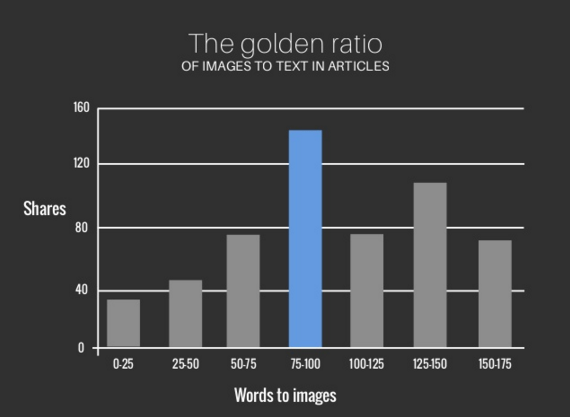
Then, there’s the fact that it can get you up to 94% more page views. And while infographics aren’t the novelty that they used to be, they can still generate hundreds of backlinks for you.
Which helps you obtain the perfect blend of:
- Traffic
- Trust
- Time on page
That you need to boost your rankings, audience engagement and the end result of creating content – sales and awareness.
Still with me? Awesome. Let’s look at how you can make the most of your SEO and turn it into a search traffic magnet then…
How To Create Magnetic Alt Text
Alt Text – also known as Alternative Text – is the part of the image the Google can see.
Because, even though you might think of Google and all seeing, all knowing and all powerful…it can’t see images. Go figure.
So, with this Alt Text, it’s relying on you to paint a piece of beautiful scenery it can enjoy. And explain why it’s relevant to your page. Like a text-to-speech version of your favourite book, but for Google crawlers.
Not using Alt Text is one of the most common SEO mistakes I see.
It’s prime real estate and so many SEO’s, blogger and niche site owners just don’t take advantage of it.
Most of the time it’s because you have no idea what to put there. Or, because it’s easier to leave your image as ‘DCI009087’ and ‘Screenshot 01-10-2015’ tags. But now you’ve read this, that’s no longer an excuse.
So what should you be putting here to boost your rankings?
Well, here’s a simple mnemonic to help you remember.
You need to keep it REAL:
R – Relevant
E – Easy to read
A – Around 10 words
L – Long Tail Keywords
For example if you were to use this picture of a Tattoo in a blog post for a client:
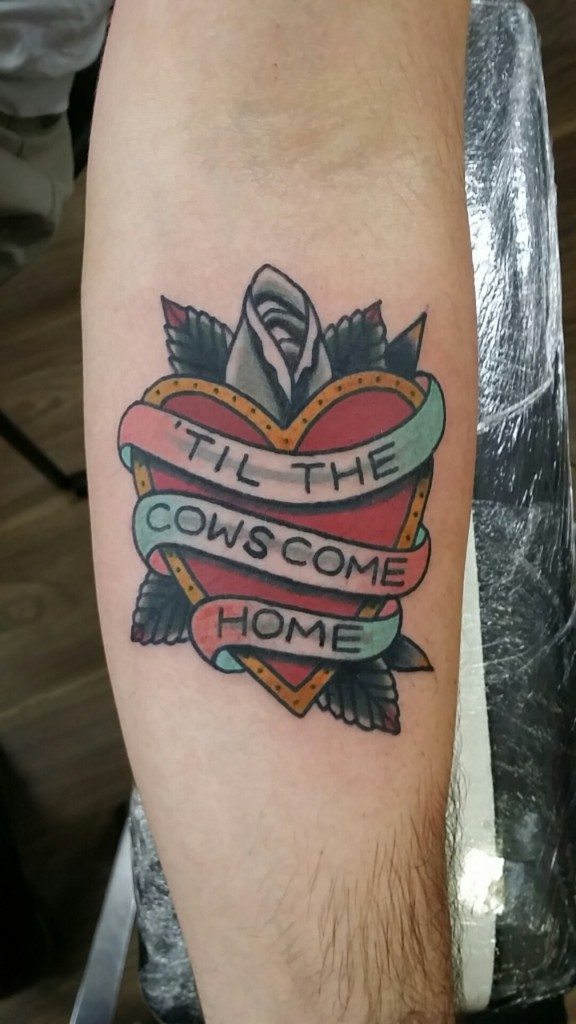
You would use a tag like this (keywords in red):
fresh-heart-shape-tattoo-at-rain-city-tattoo-parlour-manchester.jpg
james-johnson-tattoo-artist-sailor-style-piece.jpg
Why long tail keywords? Because they’re more natural and authentic, usually, when it comes to description.
If you were to save that tattoo image as:
manchester-tattoo.jpg
sailor-tattoo.jpg
It wouldn’t provide an accurate account of what the image is. And crawlers would look more at this like keyword stuffing. Which is, well…bad. Really bad.
Action Step
Before you move on to the next section open up a new tab with one of your pages that contains an image. It could be anything from a Press Release to a Landing Page.
Choose one of the images (or more if you have time).
Update the Alt Text to fit the REAL system.
The Alt-ernative To Alt Text
If you’ve got an infographic or image that you think goes a little beyond the scope of a 10 word alt text tag, don’t panic. There’s a way around that.
You can simply describe – or transcribe – the contents embedded in your image after the image itself. Because the crawlers will fly right past the image and too this juicy text.
For example, in this post about visual content from HubSpot, they’ve used a beautiful infographic to illustrate their point.
But before the infographic they added an introduction:
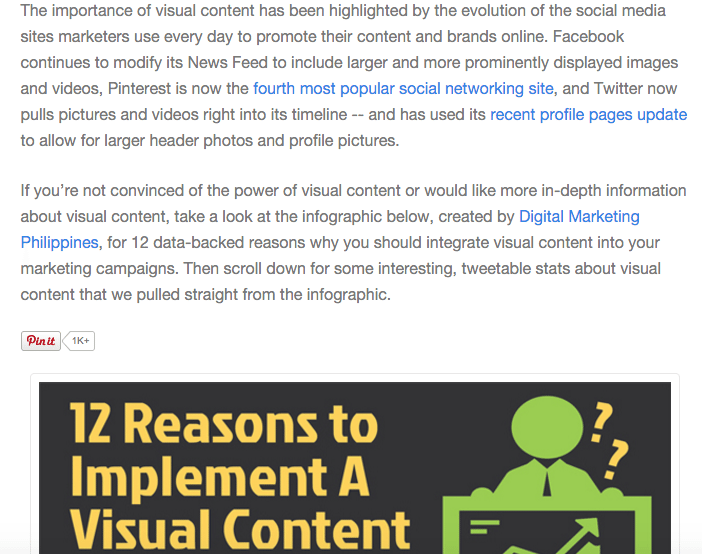
And after the infographics they’ve cleverly put the key information into Click To Tweet tags making them super easy for crawlers to find.
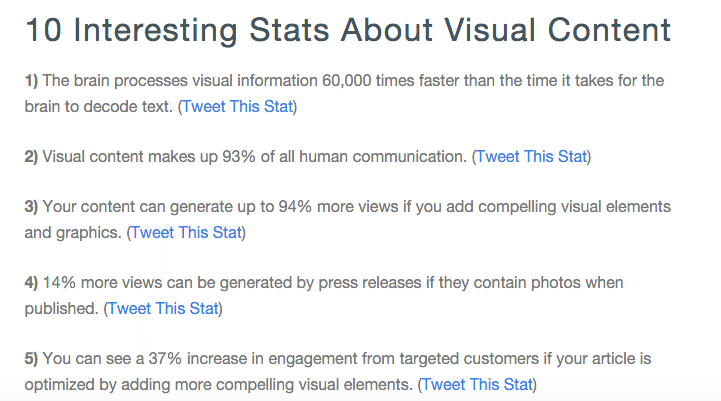
So while I’d recommend always changing your Alt Text from the default title, if you’re really struggling this is a great workaround.
What You Really Need To Know About Title Tags
Title tags are for your readers. Because it’s what they see when they hover their mouse over an image:
Now you might be thinking…why does this matter? Most people won’t hover over your image.
Well if you have an eCommerce, shop, sales or list post page, there’s a good chance they might. And this is the perfect opportunity to create a call to action.
It could be as simple as giving instruction, like this on the JD Sports Footwear pages:
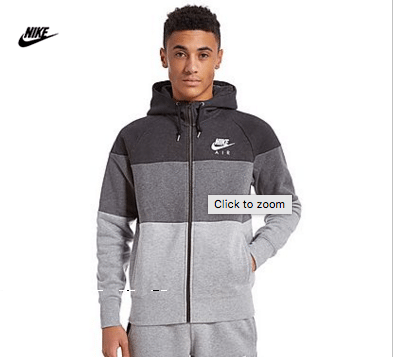
Or an easy way to describe the link, like Matthew Woodward uses on the adverts on his site:
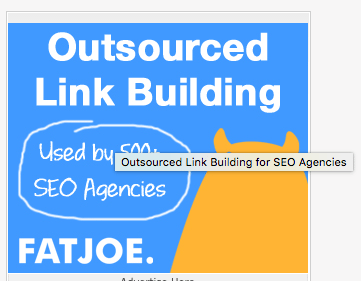
The results here may not be huge in an SEO respect. But the engagement, user experience and trust points you can build here are incredible.
SEO isn’t just about the ranking. It’s about how good the site is when they come through from the ranking, too. And this little tool can play a large role in that.
Wait, Couldn’t You Just Put A Keyword In The Title Tags?
In a word…
No.
You could if your site was dominated by images instead of text. Because that might make a small indent into your rankings if you did it with a couple of images here and there.
But on the whole I’m going to hazard a guess that you don’t use enough images on your site to get away with this. So doing this would count as over optimization and hinder you in the long run.
Focus on the call to actions instead.
Build Your Trust Flow By Correcting This One Costly Mistake
Trust is one of the hottest topics at Google right now. And, with good reason:
People want to find sites that can trust.
Nobody likes putting in a search term and ending up at a spammy site that’s about a trustworthy as a back street dentist. Unless, of course, they’re searching for a backstreet dentist.
Now trust is mostly build by trustworthy links pointing back to your site. That’s the most powerful method for it at least. And creating original visual content can lead to those links. But, there is another way you can do it before your content even goes live. How?
By citing and referencing the trustworthy sites you gathered all of your information from. Because showing you link to these sites shows you give a crap about your niche.
Okay, I just heard your eyes roll and think…”But, I already do that!”
And I’m sure you do. But you’re doing it wrong.
Take a look at this snippet of the Infographic I mentioned before from HubSpot:
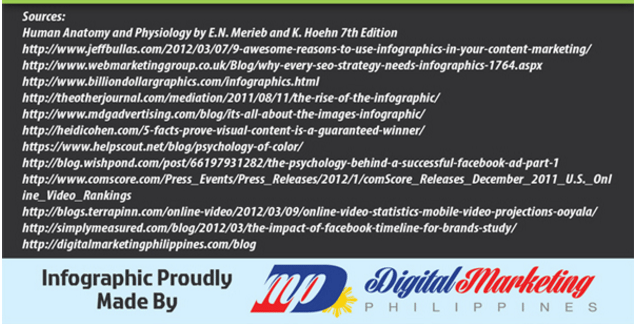
Now, tell me what’s wrong with it?
Yep, that’s right, the links are inside the image. Where Google has no idea that they exist. And none of your readers can actually access them to see the information either.
Which means you’ve lost a lot of trustworthy link points. Plus, spreading link love is a great way to connect with other sites in your niche too.
Now that doesn’t mean you can’t include references in your images. If they go viral, for instance, you’re going to want them in there. But when it comes to using them on your site, add the references after.
This problem doesn’t just apply to infographics either. It goes for:
- Screenshots
- Product images
- Quote images
- Videos
And pretty much another other piece of visual content that could be referenced, or be taken, from somewhere else.
It could be as simple as including a link from the site you referenced it from before you use the image:
Either way it’s important to get the link out there to the site it came from. It builds trust, relationships and brand awareness.
Action Step
Choose one piece of content you’ve got with images that contain links. Or, a screenshot that isn’t referenced.
Add an outbound link to the original source or the homepage of that site.
Hit save and enjoy a little extra trust.
The (Forgotten) Power Of Image Captions
Do you remember being a kid and thumbing through magazines in waiting rooms? And, how you’d never actually read the magazines. You’d just look for the interesting pictures and read the captions underneath them?
Well it turns out that’s followed you into adulthood too:
Because image captions are 300% more likely to be read than any of your body copy.
So when you’re using images on your pages, you need to take advantage of this. Because your job at a copywriter – SEO or not – is to get people to read and engage in your content. So it can drive the end result for your client, or yourself.
And this simple tool can be exactly what you need to keep people on your page longer and decrease your bounce rates.
Now you don’t need to be too fancy here. But you do need to start thinking of your captions as mini headlines and subheaders, because they’re that important.
You can take the news approach and describe what’s in the image, like this one from the Guardian:
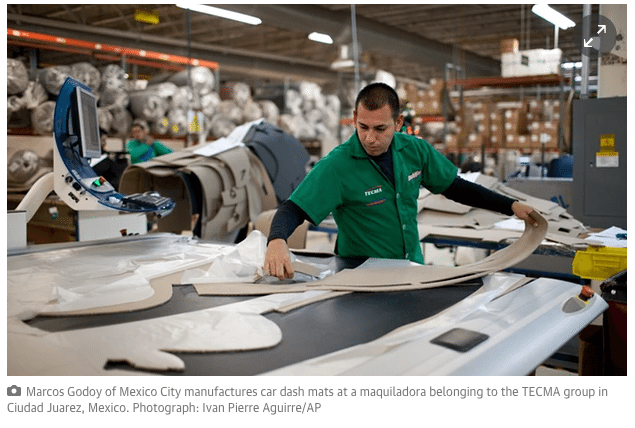
Or you can use them to sell the benefits of your products, which Nerd Fitness has down to a tee:
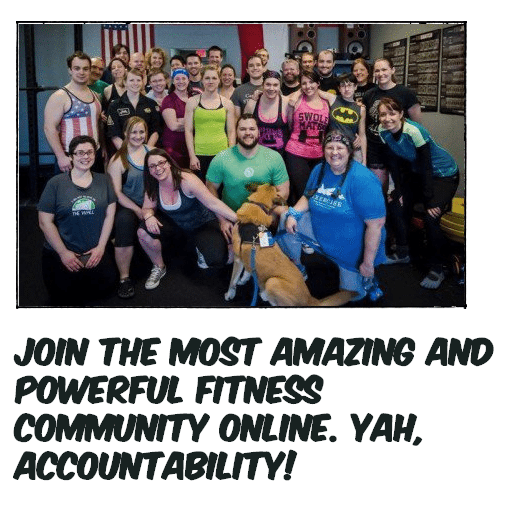
Yes, the benefits of captions aren’t entirely SEO based. But if you’re going to be using images you should definitely be trying to get the most out of them.
Action Step
For your next piece of content – no matter what it is – write captions for all of the images you use.
Then track your:
Bounce rates
On page time
Conversions
And see how they improve. I’d put money on the fact that they’ll all improve.
Conclusion
There you have it, your ultimate guide on how to maximise the SEO of your images. Let’s recap what you’ve learned:
- Create Alt Tags that are REAL for best results
- Create strong call to actions as your Title Tags
- Build your trust flow by including outbound links outside of your images
- Write compelling captions to increase on page times and decrease bounce rates
Now, it’s over to you.
Let me know your results in the comments…


